Our own dear native land,
Though tribe and tongue may differ,
In brotherhood we stand, ….. Nigeria may be blessed.
Nigeria We Hail Thee (1960) by Lillian Jean Williams
In Jesus name, Amen.
On this last stop of Joan’s magnificent 2011 culinary tour, I present a recipe from the depths of our African fabric – Pepper soup. No relation to Caribbean or Philadelphia pepper pot soup. No, neither cousin nor aunt nor friend for that matter. Think long-simmered light broth with a variety of meat or fish flavored with unique African spices like Calabash nutmeg, Pipper Aethiopila and grains of paradise.
On this tour, I’ve made a ‘traditional’ Nigerian recipe. Traditional.
- Traditional: make one of the country’s national or traditional dishes.
- Contemporary: take a traditional recipe and contemporize it.
- Or, using the flavors and techniques of the country we are visiting, create your own recipe.
Nigerian pepper soup is ‘ chicken soup to the rest of the world’ – the one ‘soup’ people long for when its blistering cold outside, the same one others lap up at parties and celebrations of every sort. It is also your one-stop soup for all ails – when you’re down with the flu, when you’ve just had a baby, when you’re recovering from Malaria, and the list goes on and on. And though it is called pepper soup, peppers are not its only component, far from it….and it doesn’t even have to be fiery at all. I guess its the spice from the other ingredients that lend it the name.
I’ll also have you know that this is the only ‘drinking soup’ we have in Nigeria and it exists in quite a few versions. See, we have two categories of ‘soups’ – drinking soups (a party of one) and ‘eating soups’ (actually stews, of which there are many).
Anyways, back to pepper soup. You can well imagine that a country the size of Nigeria, with over 100 million people will have regional varieties of pepper soup – all broths, with different spice combinations. All well and good. In the east, the Ibos (a large ethnic group) prepare their pepper soup with tomatoes, onions and spices, as do the ‘Rivers’ people in the southeast. In other parts of the country, the little-known traditional pepper soup spices are employed in the making.
Expatriates or Nigerians in diaspora and without access to the ingredients have used combinations of allspice, anise pepper, anise seeds, cloves, coriander seeds, cumin seeds, dried ginger, fennel seeds, and tamarind pulp and others dried thyme, Maggi® bouillion cubes, curry powder, cayenne pepper or red pepper and tomato paste.
Where I come from, in the ‘Delta’, pepper soup is not pepper soup without ataiko, uda , gbafilo and rigije, amongst others – native names for ingredients that are unique to our part of the world. At home in Warri where I grew up, we’d always add lemon grass leaves (not the stalks) from our thriving bushes which lend clean and citrusy flavours to the broth.
Often too, the broth would be ‘finished’ off with the addition of chiffonaded blades of ‘scent leaves or wild basil’ at the end of cooking. Scent leaves have a peculiar taste – a bit bitter and citrusy, with a sweet scent. Minty and earthy, I love the way Yemisi describes it on NEXT in an article, ‘FOOD MATTERS: Plantain and scent leaf porridge’. She says and I’ve added some more details in {brackets}
‘It is the first week in August, and I have a newfound passion for scent leaf, wild basil, ocimum gratissimum, clove basil, efirin {a Nigerian name}; whatever you like to call it. In Calabar {a city in the east}, it is raining almost every day, and the pineapples are bursting with tangy sweet juice, they arrive in the house on stems as thick as a man’s arm; the corn is absurdly fresh, giving way under your fingers and the plantains are yellow and fragrant when ripe.
Even when it isn’t raining, the flame of the forest is swaying its own rain of pollen. It might be why they say Calabar people can’t get their minds off matters pertaining to the appetites. At every turn, I want to put something in my mouth.
Scent leaf can be grown by a toddler in this environment. It is as aggressive, as prolific as a weed. A thick bush of it costs nothing more than fifty naira { equivalent to 25 euro cents or an American dime, essentially peanuts} , and the taste of it is complex, bitter, sweet, minty, earthy, like basil, like cloves, like soil and rain mixed together. Its complexity confuses even scientific categorisation. There is a tonic made out of it that is said to alleviate, if not cure absolutely everything that goes wrong with the human body.
Scent leaf substitute: Thai Holy Basil
Nigerian Pepper soup spices
The spices that define pepper soup result in a flavor profile that is typical of Nigerian, if not African cooking – bitter, sweet and somewhat herby with some astringency. Aromatic, pungent, intensely flavoured and fragrant, capturing all the nostalgia of my youth, and some of adulthood…leaving nothing behind.
At home in Holland, I have some but not all of the spices and I’ll introduce you to a few of them, each called by many different names. The dilemma of a populous country is the multiplicity of languages and Nigeria is no exception. The name of one spice will vary from one village to the next town, only a few hundred metres away. And further, one outside their locality will struggle to find the spice they need for their pot of soup because what is the name in their dialect, suddenly becomes an insult in another language. And so, I give you all the names I know and have researched so far…but one day, I will put together a guide for Nigerians!
Calabash Nutmeg
Also known as Jamaican nutmeg, Muscade de Calabash, Awiriwa, Airama, African Nutmeg, African Orchid Nutmeg, Ehuru. These are the seeds of Monodora myristica, a tropical shrub of the Annonaceae (Custard Apple). Though the flowers of Monodora myristica look more like an orchid, the fruit itself is a nearly spherical drupe the size of an orange and containing many aromatic seeds embedded in a yellow pulp. These seeds, once dried, are grated and used as a substitute for nutmeg. Photo below shows Calabash nutmeg in the foreground and regular nutmeg in the background.
It has an intriguing nutmeg-like scent, though its flavor only mildly hints at Myristica fragran, its flavor is much spicier and makes an interesting addition to many sweet dishes, cakes and rice puddings.
Traditionally it is ground and used as a seasoning but it can also be grated, just like nutmeg. In Nigeria, the shelled seed of the fruit, known as ‘Ehuru’ or ‘Ehiri’ is also sold as a spice. This is more pungent than the whole fruit and tends to be used more with meat dishes, like in my pepper soup.
Enge
Xylopia Aethiopica. A smoked spice similar to black cardamom, which is traditionally dried over open flames. Also known as negro pepper and grains of selim, Ethiopian pepper (Pipper Aethiopila), Senegal pepper. These are (clusters of) black, often long-stemmed pods, which sort of resemble bean pods. They are full of seeds which sculpt and contour the pods.
The pods are opened up and the sticky black seeds are removed and discarded because they are extremely bitter.
The pods are then toasted over open fire and then crushed in the spice mix for the pepper soup.
Substitue – Black peppercorns
Atariko
Mbongo spice, hepper pepper, Aframomum danielli, Aframomum citratum or Aframomum exscapum. Small seeds sold in or removed from an alligator pepper-like pod. Highly scented and a close relative of grains of paradise, obtained from the closely-related species, Aframomum melegueta, but not as hot.
Substitute – alligator pepper, shown below:
Alligator pepper
so named because the pod resembles the bumpy skin of an alligator
Yanghanyanghan
Tetrapleura tetraptera – shiny, dark purple-brown, usually slightly curved ribbed pod about 15-25 cm long by about 5 cm across. The pods have 4 longitudinal, wing-like ridges nearly 3 cm broad, which lends it is Greek name meaning ribbed & four-winged. Two of the wings are woody, the other 2 filled with soft, sugary pulp which is oily and aromatic. The seeds, which rattle in the pods, are small, black, hard, flat, about 8 mm long, embedded in the body of the pod, which does not split open.
Locally called Aridan. And also described as being the fruit of the Aidan tree.
The pulp is what goes into the soup. It is usually sold already chopped up, somewhat soft and fragrant. I hear some people make a dried/fermented condiment with the seeds.
Image copyright of Celnet.org
Gbafilo
Parinari excelsa (Mubura): This large – about 2cm, egg-shaped seed has a hard, rough sandpaper-like surface which houses an edible, spicy nut which, when shaken can be heard moving freely inside. The Gbafilo nut is removed, often toasted and ground for inclusion in the (Niger Delta) pepper soup spice blend.
Image copyright of RitvaL
All these ingredients and a few more are combined in a certain propotion, which only my mum and grandmum’s generation know…….. And that forms the spice mix which flavours water and turns it into liquid gold. I have promised myself that when next I go home, I’ll sit with my mum to get the exact spice mix recipe so that I can teach my kids and carry the tradition. It would be a real shame if future generations did as I do now – ask my mum to send me a pack of already ground spice, or purchase a pack from the Nigerian shop in Holland Spoor.
Now, onto the soup, which makes a large pot, but is never too much as it keeps well in the fridge and even better in the deep freezer.
Tips
- Meat is almost always cut into small pieces when used but fish is left regular, steak size.
- Beef is rarely used to make pepper soup on its own. It is often combined with oxtail, cow hooves, tripe, offal and intestines.
- In Nigeria, pepper soup is often made with ‘hard’ soup chicken, called ‘old layers’, which are considered tastier than soft , young chicken (‘broilers’). However, hard chicken takes much longer to cook than soft but is full of flavor. If using soft chicken, watch the timing otherwise the chicken will end up as a shredded mass.
- You can make the soup with fish but let the broth simmer for up to half an hour before adding the fish so the flavours marry well.
- Typically Tilapia and Snapper are the fish of choice, along with fresh catfish. Sea bass and other white fish would also work well.
- Crayfish is the Nigerian equivalent to Thai Fish sauce, except it is dried and then ground and isn’t liquid. Omit it or use small (dried) shrimp instead.
- Ready made pepper soup seasoning is available in African/Nigerian shops – or ask your Nigerian friends for some of their stash!
Nigerian Pepper soup
Ingredients
1.25kg of ‘soup’ (hard) chicken or goat meat, cut in bite-sized pieces 2.5 litres of water 3 tablespoons of pepper soup spice mix 1 stalk of lemon grass, bruised and cut into three pieces, tied into small bundles 1 – 2 Maggi bouillon cubes Ground red chilies/ cayenne pepper, to taste Salt, to taste 2 teaspoons of ground crayfishPepper soup spice mix
8 skins/barks of urheri (grains of Selim), bitter seeds discarded
4 seeds of erhe (calabash nutmeg), shelled
2 seeds of gbafilo, shelled, and seeds roughly chopped
2 seeds of umilo, shelled and seeds roughly chopped
1/2 teaspoon alligator pepper (grains of paradise)
1/2 teaspoon uziza seeds
In a dry frying pan or skillet set on low to medium heat, stirring frequently until fragrant, about 5-6 minutes. Remove from the heat and let cool down completely.
Once cool, blend in a mill or spice grinder and blend till combined – it is a crumbly mix so don’t expect it to be a fine powder. Store in an airtight container. Keep away from sunlight and store in a cool place. It’ll keep for several months.
How to
To make peppersoup, put chopped meat in a large pot and cover with some of the water (about 500ml). Add a tablespoon of the spice mix, some salt, the maggi bouillon cubes, some red chilli powder, the crayfish if using and the lemon grass bundles. Stir and allow to simmer on low heat till liquid comes to a boil.
When the liquid comes to the boil, add the remaining 2 litres of water and the rest of the peppersoup spice mix. Allow cook on medium – low heat . Adjust salt and pepper to taste and simmer till the meat is soft but isn’t falling off the bone.
Serve with boiled plantains and yams and some palm oil, if you like.
The Verdict
Rain drops on my window panes, soup misting up the glass in front of me.
When the soup is ready and my bowl is in front of me, I dip my spoon in and an instant later, an eddy is generated – oils, water, sediment, mixed, swirling and totally, totally gorgeous. The oils from the meat and spices set themselves places – mini globules of flavorful and spiced broth, speckled with calabash nutmeg.

The components of the soup begin to dance, a sort of victory, marital celebration – loathe to dive onto the spoon but hankering after it at the same time.
The film of oil over the top, glimmers, especially with fluorescent lights. If you look hard enough, you will see strands of Tetrapleura tetraptera.
Though ground, the spices still have coarse bits which separate out into two layers – some sink deep to the bottom like sand on the seafloor and others ride up and are caught, entrained in the liquid and peppering the surface with their varied colours – red, black and brown flecks of deliciousness.
The soup is warm and pleasant on my tongue and in my throat, a slight fishiness without the smelliness. In seconds, I feel my sinuses clear out. There is an appealing saltiness that reeks of being ‘well-seasoned’ without being concentrated seawater. Slightly savory without the intense pungency of African dishes.
To me, that is.
Some other person might disagree.
We all sit – my entire family, drinking up spoon after spoon of bowl after bowl, warmed and united in love. My third culture kids will only have it with chunks of warm baguette, while my husband and I, my cousin who’s visiting and his Welsh wife tuck in true Naija style – warm boiled yam halves and sweet boiled ripe plantain, drizzled with some thick palm oil sludge. Some warm soup later, and a few chunks of meat, it all becomes a Nigerian symphony. We eat, we drink, we talk and we are merry. And all the while, the skies of Holland open up and pour out their waters.
And then I remember that once I made a Chinese style soup with wood ear mushrooms, rice wine, light and dark soy sauce, rice vinegar along with some aromatics – ginger, garlic, spring onions and coriander stems and guess what? It reminded me a lot of pepper soup!
Thank you Joan of Foodalogue for another superb culinary tour. I have enjoyed it, learning, sharing, making new friends and most of all eating.
Thank you very much! Lots of love….and guess what? You could say ‘Coming to America‘. Well ‘Coming to Houston’ would be apt, but more on that later. Lots of love and please visit Joan at Foodalogue tomorrow to see what the other fantastic dishes from bloggers the world over.

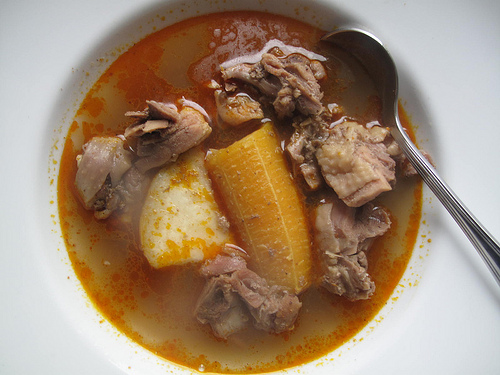
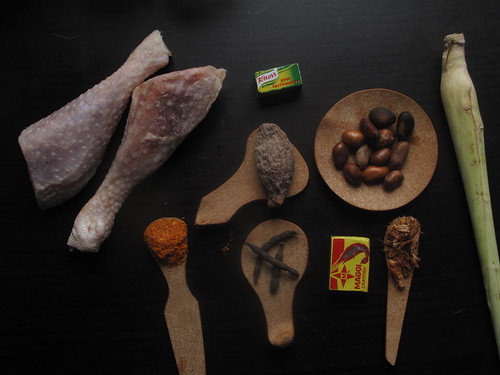
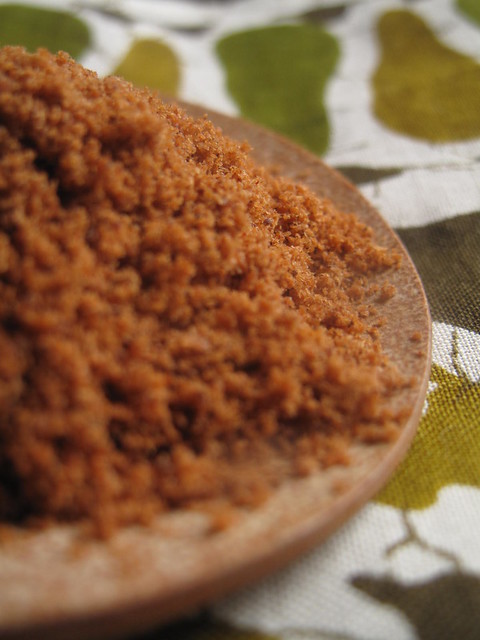
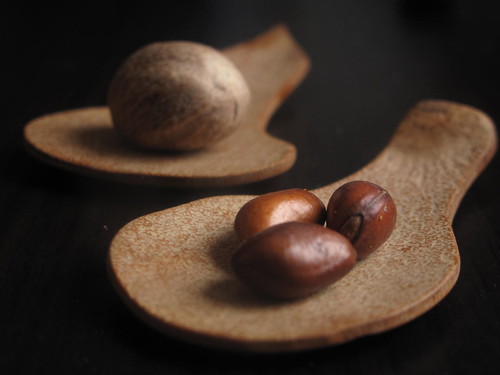

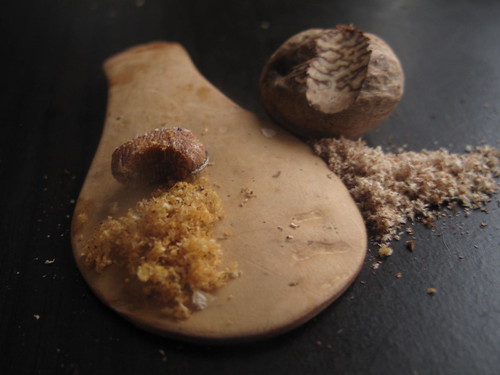
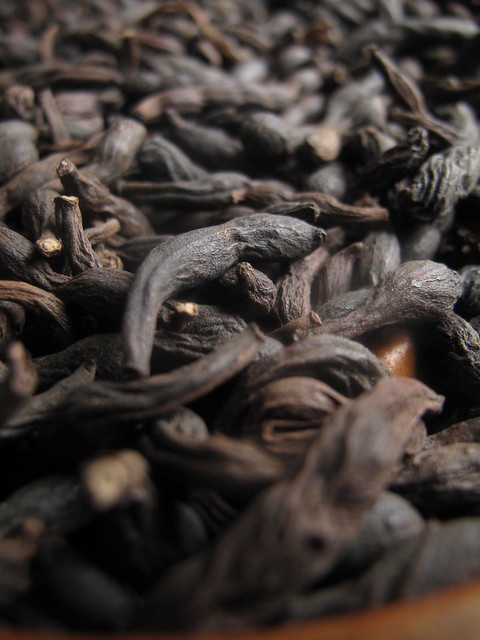
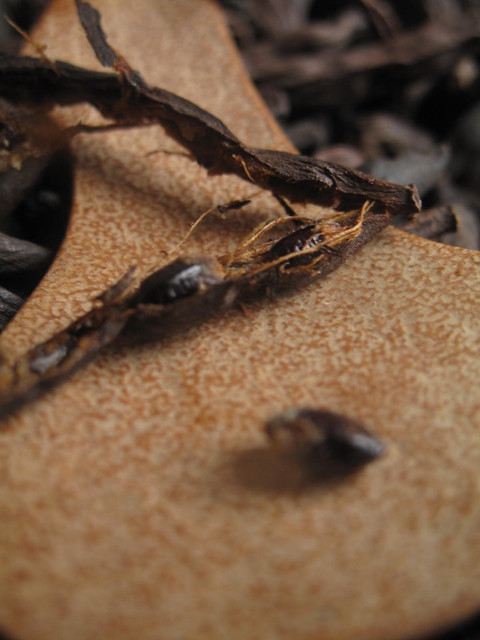


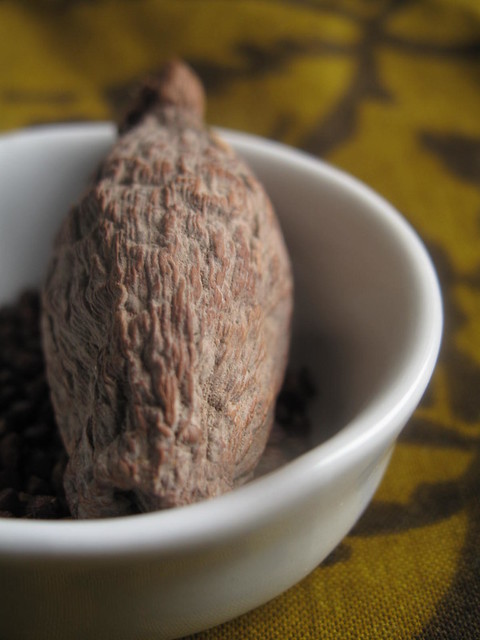
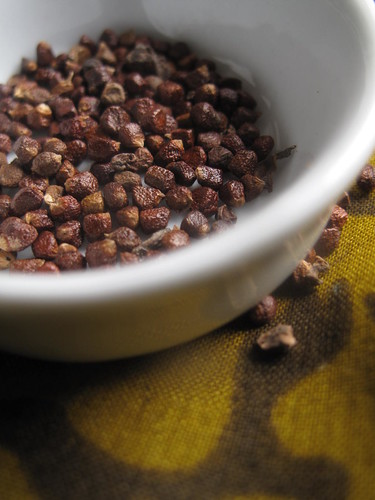
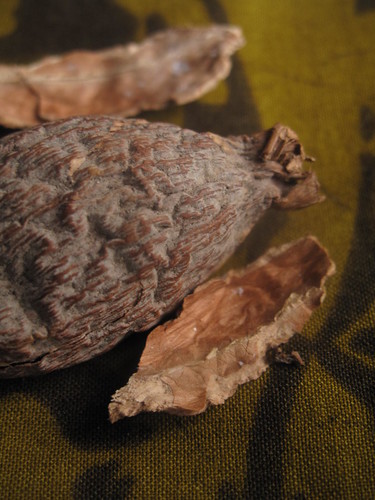
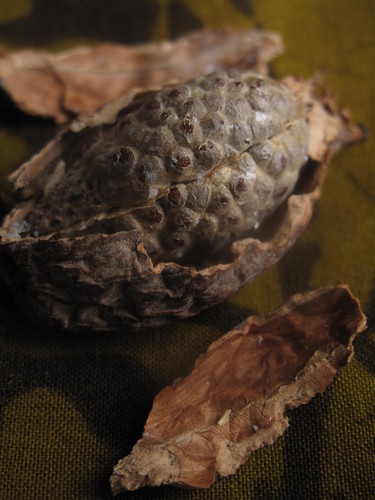
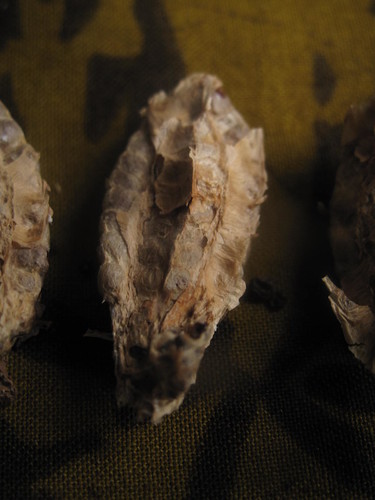
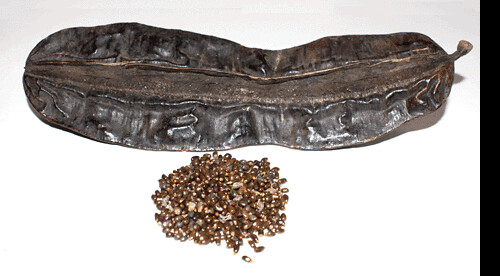

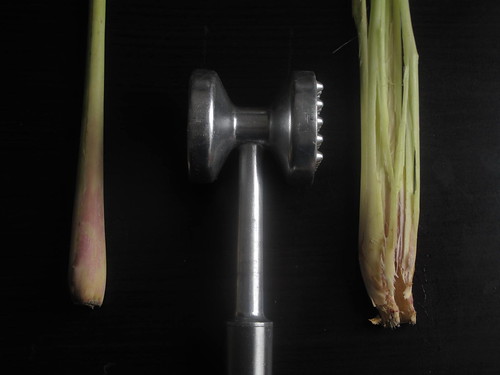
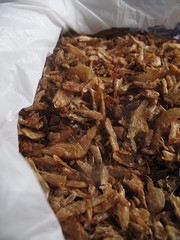
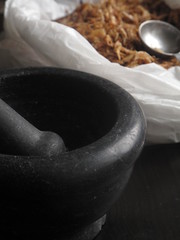

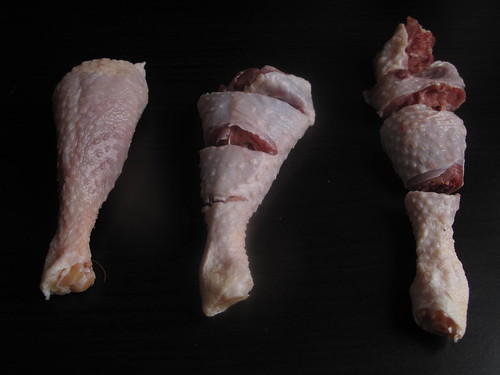
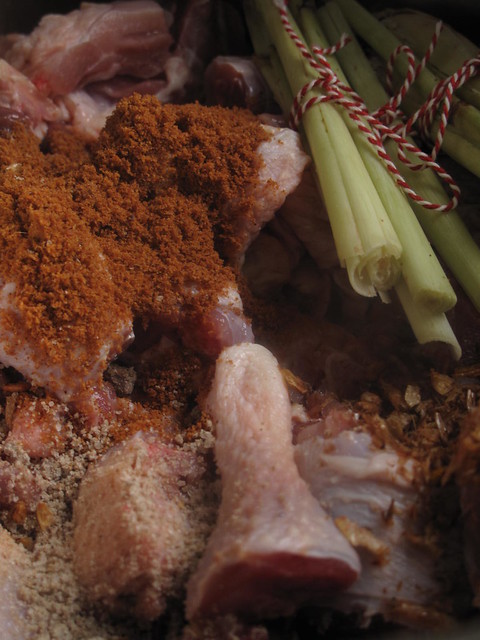

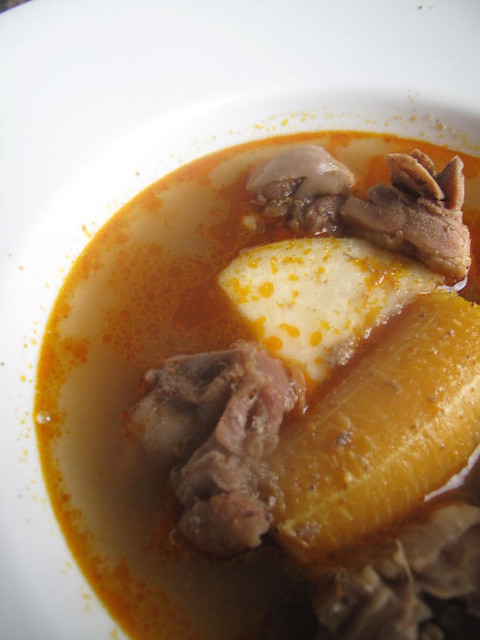


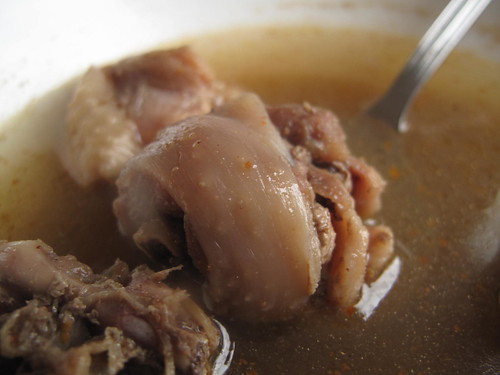


[…] Martian,’ and I have found several others on the internet (check this lovely blog for example: https://www.kitchenbutterfly.com/2011/03/01/how-to-make-nigerian-pepper-soup/). The substitute spice mixes that I have found are very similar, and using what I had at home I […]
[…] (probably for identification in barns) stand up in barrows pushed by young men. We love yams with pepper soup, fried and roasted. Even boiled, and served with salt and butter, which melts and creates a […]
Lovely and interesting piece, savoury dish too! I can even feel the taste from the pictures – :). Luckily, I just received my pepper soup package from Nigeria. But I’ll certainly try out the substitutes sometime. Thanks so much for sharing this!
[…] figured out our origins, I quizzed him about Pierogis for he is Polish, and he asked me about pepper soup. He said he liked to it it ‘gumbo-style’, spooning the soup over rice. Gumbo made me […]
This is how to make proper pepper soup. And to have have all the names of the spices as well. I had just had pepeer soup with Plantain for lunch (with spices imported directly form warri)! It is just fantastic welldone good sista!
[…] a parcel by folding the leaves, reserving one to knot the bunch. This is thrown into my pot of pepper soup and left to simmer till its ready. Once done, I fish out and discard it. And I’m never […]
[…] depart the kitchen and arrive steaming hot and aromatic onto the tables of guests is likely to be peppersoup. The finest sort is filled with bite-sized pieces of goat meat and offal – tripe, intestines, […]
Oz,
Wow, thanks for putting up this authentic nigerian peppersoup recipe. Being an Isoko girl , I am very particular about peppersoup. This is the most authentic recipe for nigerian peppersoup without any strange and foreign additions like garlic, anywhere on the web. Keep up the good job girl!!!
Fantastic!!!! Fantastic!!!! Fantastic!!!!
I live in Rives State, Nigeria where peppersoup is a daily staple and believe me you nailed this recipe right on! Great pictures, great poetry…i looooovveee.
Here pepersoup is made at the slightest opportunity. it rains?….peppersoup, cold?… peppersoup, feeling tired?…..peppersoup! headache?….peppersoup! body aches and pains?….peppersoup!!!!
And its prepared with everything, huge catfish, tiny fish we call “ikerere” dried fish, beef, chicken, goat meat, its endless. And we also eat it with anything, bread, white rice, boiled yam, ripe and unripe plantain, cocoyam, eba(Garri).
I’m at work now and day dreaming of my fish peppersoup in the fridge. 😀
thanks a bunch for this recipe, because its been over 8yrs in the states and i’ve been craving peppersoup for a while, finally i’m making it as type this very much thanks you
funny how those of us at home in africa deny ourselves this. your describtion makes the roadside clubs mediocres. good work.
can i get the local name for cumin seeds?
kind regards
Bola, sorry for my late response. I don’t know the local name for cumin seeds. The alternative recipe is for people who dont have access to the regular Nigerian peppersoup spices.
This is a true Nigeria Pepper Soup preparation. It will be a good thing if most Nigerian restaurants in London learn from this. Please give more tip on other Nigeria foods
Hi,
Its a nice recipe you gave but we do not know the local names of these ingredient in order to buy them. other ingredients can be described but fennel seed seems difficult. please i will like to know the local names either in delta languages, igbo or yoruba name for fennel seed.
thanks
Grace, sorry for my late response. I don’t know the local name for fennel seeds. The alternative recipe is for people who dont have access to the regular Nigerian peppersoup spices. Use the peppersoup spices you can find in Nigeria.
[…] with pepper soup, fried and roasted but to pit them against ‘salad’ ingredients seemed taking it one […]
I feel compelled to post! Thank you so much for posting this. It has brought back plesant memories of going to ‘joints’ to have pepper soup and maltina. I could drink a gallon of peper soup. As I type I am defrosting some cow hoves and lamb meet. All thanks to you. Wish me luck!
Hi this was such a great post. Just like you i have been trying to hunt down exactly what goes into our peppersoup spice mix with very limited sucess so thanks so much for that extra bit of light your article has shed. Can I ask you how the Aridan is incorporated? Do you drop the whole thing in? Break it up and only use the seeds? Use the fleshy part? I also noticed the absence of Uziza (piper guineensis) seeds, was this deliberate? I know I”ve had to stop using it myself, it always seems to bitter up the soup beyond redemption but for some reason every peppersoup recipe has it included!!! Cheers and happy holidays.
Ebele, sorry for my late response.
I’ve updated the post with a description of how the Aidan fruit is used. It is dried somewhat and the pod is broken up into small, centimetre-sized bits which are then ground and added to the recipe.
On Uziza, I’m not familiar with it in Delta-style peppersoups and will be on the look out for it, especially since I’m keen on learning new things!
I have managed to sit with my mum and get the proportions in which the various ingredients are combined – I’ll be sharing that in the new year. Thanks for your kind words.
I have been to Lagos, Jos, and Abuja and tried pepper soup every place I went. I loved the catfish head pepper soup in Abuja (even had some in Ghana that was okay) and have wanted to make it ever since. Most recipes say us so much of spice packet but can’t really find it here in Singapore. Now I can finally do it. Great time of year to have this wonderful soup. Thanks! Great story and pics.
Dave
David, thank you for your thoughtful comment. This is what makes me happy and brings joy beyond compare – to touch people with a recipe, bring back a memory of a place, of people, of scents longed for but somehow forgotten. I hope it makes a difference in Singapore.
Thank you so much! I generally wait until I turn up at assorted aunties’ homes to sate my Nigerian food hunger pangs (eating out also works, but it’s never quite the same, is it?), but now have a massive pot of oxtail peppersoup sitting in my fridge. And it’s all thanks to you. 🙂 The substitutions honestly wouldn’t have occurred to me and I’d rather be shot than cook with a store bought peppersoup mix. I’m your good deed for the day. Well done!
And your blog is lovely. You’ve acquired a new fan.
Hello! I just happened across this post, and I’m so amazed at how beautiful this soup looks, as well as the actual post itself! I was wondering if there was a place online that sells Calabash Nutmeg — I’ve been looking around for a few days, and haven’t been able to find it. Thank you!
[…] by the finely ground seeds of a native mango fruit. For in Nigeria, we have ‘eating soups’ (vs. drinking ones) which are, by strict definition stews. I feel the sun beat down my back as I lift and dip morsel […]
Hi I am one of the editors for an Emergency Medical journal. We have a section in our journal dedicated to all things non-medical. We’re looking for a good Nigerian Pepper Soup recipe to publish in our December issue to coincide with Christmas. Yours was the best we have seen so far. Would you be willing to consent to us publishing it. You will be recognised as the author.
With joy. I’ve emailed you already. Cheers and many thanks
@ Kitchen Butterfly:
Done: http://food-porn.livejournal.com/6236293.html
Ma’am, thank you for this reminder of how one person’s exotic foreign delicacy is someone else’s mother’s cooking (and vice versa); you’ve managed to compose both an invaluable tutorial for the former and an expatriate’s eloquent hymn to the Taste of Home for the latter. Do I have your permission to link this post to the Livejournal community Food Porn (pending the approval of the latter’s mods, of course)?
http://food_porn.livejournal.com/
Full Metal Ox, link with all my love. Thank you for the encouragement. I appreciate it
I can not tell you how grateful I am for finding this post. I just moved to this part of Asia where it looked like I would never have anything at least close home. I have been dying to have the pepper soup I love so much. Very clearly written, I was salivating towards the end.
Thank you a million times.
Hi Cilla, I feel you a 100% – so glad I could bring you a measure of comfort so many miles away from home!
Thanks so much! I have been trying to get the English name of these spicy for years! I can’t wait to hit the shops this weekend and make myself a delicious pepper soup. No need for all these useless winter flu tablet! yay!!!!
My dear Ozoz! I am back from my trip and it is a cloudy gusty day and so I think it is a good day to make use of that amazing peppersoup spice you sent me! I plan to experiment and use tomatoes, as that’s how I had it and I’m keen to recreate that flavor. Very excited!! And of course I will keep you posted. I can’t tell you how much I love this post!! It’ incredibly insightful and poetic and really, really informative. And beautiful to look at, as always. xoxoxo
Welcome back Trix. Let me know how your soup goes!
[…] Nigerian Pepper Soup […]
[…] Nigerian Pepper Soup […]
YUMMY….AM HEADING TO AFRICA STORE NOW….
[…] Netherlands. I can’t though and I lie down for an hour. My friend wakes me up with news that the pepper soup and Texas toast are ready. I hurry down to a steaming bowl of catfish pepper soup with new russet […]
I could smell the pepper soup as I took in the details. Very nice job explaining all the ingredients and substitutes.
Next stop?
I love how you’ve walked us through the spices, most of which I’ve never heard of before! The Nigerian equivalent of chicken soup – you must have been overjoyed eating it while the world stormed down outside! 🙂
[…] I teased you in my last post about ‘Coming to America’. Its all part of my bubbling excitement because the fartherest west […]
I feel like I sat at the table with you for this meal. Sadly the journey is at an end – but I’ll be visited this page often. It’s been such a pleasure to find your blog through this culinary journey.
This is such an interesting read with so much info of ingredients used. I love peppery or gingery soups. They are so warming, especially in this cold, freezing weather. I will drink a big bowl of your soup 😀
Ah…the words, the photographs….just reading this post was like a salve for my soul. I loved learning about this soup, about some of the spices that make it so special. It looks delicious, and I’m sure it tastes even better. Thank you for sharing. I hope you have a great Friday…I’m ready for the weekend to be here!
thanks to the introduction of these pepper! oh wow!
What a wonderful post, I enjoyed the information about Nigerian cuisine (which I know nothing of). The soup is, I’m certain – delicious.
Wow, great post. The soup looks so warm, earthy and inviting. Would love to try it!
Wow, this is a gorgeous post Oz, your pictures are incredible. I just wanted to eat every image. 🙂
Just beautiful, Ozoz. 🙂 What is it about spices that draws us in and makes us feel like we’re on an adventure without leaving our kitchens? 🙂 I love learning about new ones I’ve never heard of before, and you did a masterful job piquing my interest even further. It’s raining here too. 🙂
This is one of the best posts you have ever written, Oz. I drank in every sweet word about your wonderful savoury pepper soup. The spices and pods and seeds I have never heard of and have no frame of reference for flavourwise. Your description was detailed and read like poetry. The streaky water coloured translucent window coupled with your steamy fragrant broth made my afternoon stand still as I sat with your loving family, for that one moment, this one day in Holland when the skies opened and cleansed the earth drawing you all around the table, your bowls, and your heritage. You had better make that trip home to your mother, soon. This is a soup where the spice blend must never be lost. It is far too precious a tale, and was far to long a road travelled to leave it behind.
🙂
XO
Valerie
Oz, this soup sounds and looks gorgeous!
I agree with our friend Joan. Rocked it you did. Wonderful tutorial and I learned quite a bit, but I always do with your posts. I can’t wait to find out when you will be arrriving in Houson….
It was truly a pleasure taking this tour with you.
What a fabulous tutorial. I learned so much. Great pictures and sooo much info. I’ll have to read this quite a few times to absorb it all. Fascinating. Thank you for sharing!
[…] Our friend, Oz from Kitchen Butterfly in The Netherlands is Nigerian-born. She rocked this stop, as I knew she would, with a tutorial, a pictorial and a first person accounting of pepper soup. […]
You can’t make me leave.
I’m not getting on the plane.
I want more soup.
this was a course in and of itself.
What you put into these posts does not go unnoticed.
Bravo to you, and this.
I’m glad to have found your page.
Very intriguing soup, I would love to sample it someday, or some version of it. Maybe soon????
Are you coming to Houston? Visiting, moving????? Don’t keep us in suspense too long.
You rocked it, my friend, just as I expected you would. A tutorial, a pictorial and a lovely first person accounting. Thank you so much for all your contributions!
P.S. I’m sufficiently intrigued and guessing you’re relocating. Getting closer, perhaps we’ll meet in person one day. 🙂
Looks like such a nourishing soup…. I was wondering what you’d do for this leg of the culinary tour! Greetings and hugs from London X